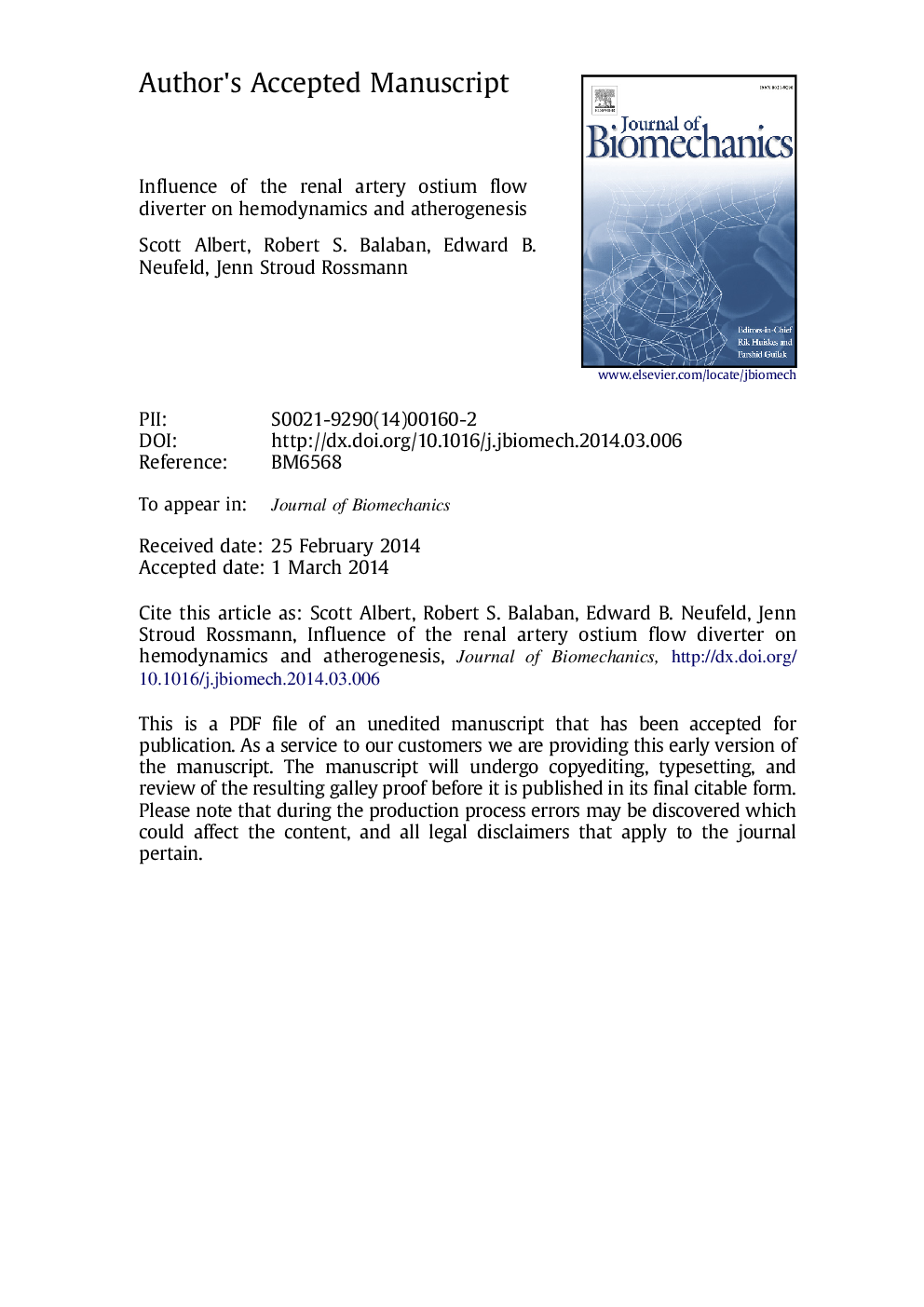| Article ID | Journal | Published Year | Pages | File Type |
|---|---|---|---|---|
| 10432258 | Journal of Biomechanics | 2014 | 31 Pages |
Abstract
The structure and function of the renal artery ostium flow diverter on the caudal side of the renal branch point were previously reported; in this study, we further evaluate the diverter׳s possible functions. The protrusion of this structure into the abdominal aorta suggests that the diverter may preferentially direct blood flow to the renal arteries, and that it may also influence flow patterns and recirculation known to be involved in atherogenesis. Three-dimensional computational fluid dynamics (CFD) simulations of steady and pulsatile blood flow are performed to investigate the influence of diverter size and position, and vascular geometry, on the flow patterns and fluid mechanical forces in the neighborhood of the diverter. CFD results show that the flow diverter does affect the blood distribution; depending on the diverter׳s position, the flow to the renal arteries may be increased or reduced. Calculated results also demonstrate the diverter׳s effect on the wall shear stress (WSS) distribution, and suggest that the diverter contributes to an atherogenic environment in the abdominal aorta, while being atheroprotective in the renal arteries themselves. These results support previous clinical findings, and suggest directions for further clinical study. The results of this work have direct implications in understanding the physiological significance of the diverter, and its potential role in the pathophysiological development of atherosclerosis.
Related Topics
Physical Sciences and Engineering
Engineering
Biomedical Engineering
Authors
Scott Albert, Robert S. Balaban, Edward B. Neufeld, Jenn Stroud Rossmann,
